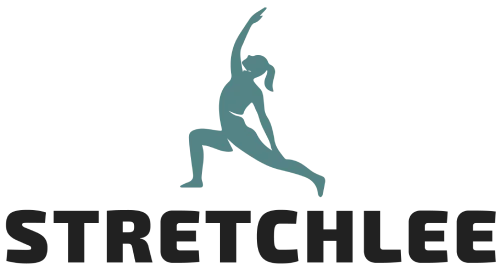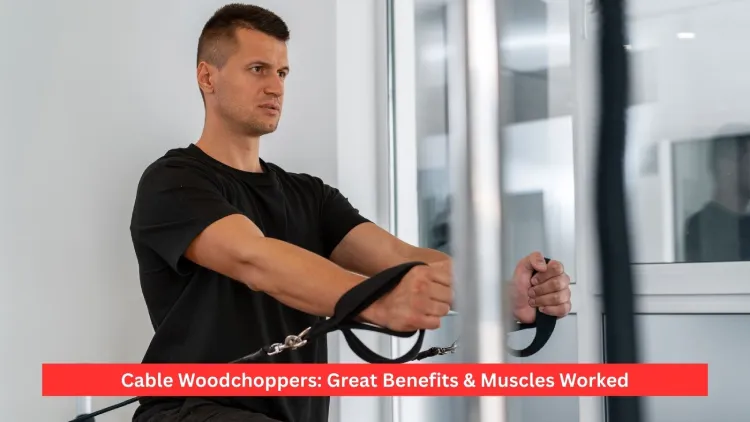A useful cable machine workout that helps to tighten your abdomen, develop rotational strength, and improve athletic results is cable woodchoppers. They focus mainly on the oblique, abs, shoulders, and hips and may be executed high-to-low, or low-to-high. These movements assist in muscle-building as well as enhancing posture, balance and fat loss around the waist, in combination with appropriate training and nutrition. Cable woodchoppers are a common addition to any fitness routine that is safe enough to use by most fitness levels.
- What Are Cable Woodchoppers?
- Muscles Worked in Cable Woodchoppers
- Benefits of Cable Woodchoppers
- How to Do Cable Woodchoppers Correctly
- Common Mistakes to Avoid
- Variations of Cable Woodchoppers
- Effectiveness of Cable Workouts
- Related Core & Mobility Exercises
- How Many Reps Should You Do?
- Are Cable Woodchoppers Safe?
- Final Thoughts
- Frequently Asked Questions
What Are Cable Woodchoppers?
A rotational core exercise that takes place on a cable machine is known as cable woodchoppers and resembles chopping wood with an axe. The practice consists of dragging the cable over your body in a diagonal from high to low or from low to high. You need your torso and hips to turn naturally to do this.
The movement is not an abs workout; it is a functional strength movement, and it is a training that makes your body better at twisting motions. Because most of the activities and motions used in sports and daily lives are based on rotation, cable woodchoppers are a key option among both athletes and those who exercise daily.
When done properly, they resemble a restrained writhing draw, as the cable handle is traversed diagonally through the body with the arms straight and the central core handling the bulk of the work.
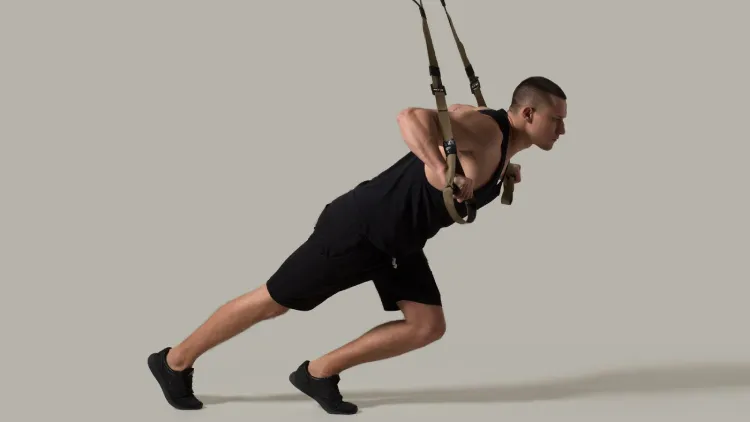
Muscles Worked in Cable Woodchoppers
Cable woodchoppers are using more than one muscle in the core and upper body.
The major muscles involved are:
- Obliques – Obliques are the principal abdominal or side muscles, and they provide lateral stability as well as rotation.
- Rectus Abdominis- This is also referred to as the six-pack muscle and serves to aid in flexion and stability of the trunk.
- Transverse Abdominis- Deep core muscles that assist in the stability of the spine and bracing the core.
- Shoulders and Upper Back – The deltoids, traps and rhomboids help in the pulling movement.
- Glutes & Hips – They are used as stabilisers to avoid the imbalance during the twist.
- Legs – Give good support during the movement.
The exercise is similar in its advantages to mainstream core exercises such as V-ups, hollow body holds, Superman hold, and bird dog exercises, and it has the added benefit of resistance and progressive overload of cables to achieve improved muscle growth.
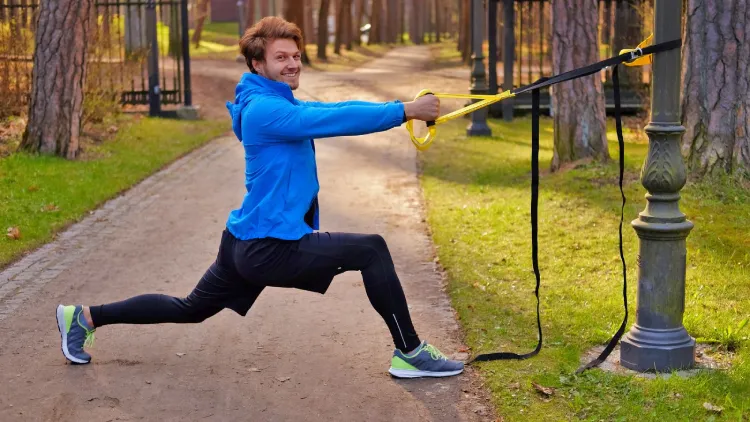
Benefits of Cable Woodchoppers
- Deep Strength and Ab Development.
Cable wood choppers also tighten the obliques and abs, and provide definition on the waist. Although twisting won’t thin your waist on its own, working these muscles, coupled with losing fat after exercise and diet, makes the midsection thinner and firmer. - Rotational Power for Sports
Sportsmen who compete in tennis, baseball, golf or boxing experience better rotational strength and stability. The drill resembles the natural twisting power that is applied to swings, throws, and punches.
- Functional Fitness
Since the workout develops real-life motions, it enhances balance, posture, and spinal support, which minimises the risk of injuries during the day and exercise.
- Progressive Muscle Growth
The constant tension offered by cables is great when it comes to hypertrophy (muscle growth). Cable woodchoppers are also adjustable in resistance, unlike bodyweight twists, which help muscles to grow effectively.
- Back Health/Spinal Stability.
They can help in maintaining spinal alignment by using the deep core and assist in lessening the strain on the back when doing other exercises like good mornings, planks or squats.
- Heavy twisting is replaced by a safer method of twisting.
Cable woodchoppers are a safe and controlled form of rotation as opposed to uncontrolled twisting or weighted side bends, assuming that you maintain the correct form.
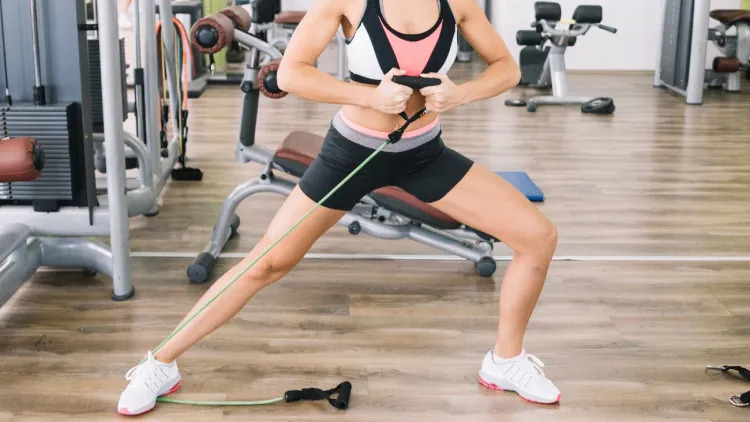
How to Do Cable Woodchoppers Correctly
High-to-Low Variation
- And a handle to the top pulley of the cable machine.
- Position sideways to the machine with the feet slightly open and the knees bent a bit.
- Take the handle in both hands and stretch your arms at right angles upwards.
- Draw the handle across your body in a slow chopping motion, and make it end up close to the opposite hip.
- Turn your body in the normal way with your spine in neutral.
- Slowly come back to the beginning of the point, but keep the tension.
Low-to-High Variation
- This difference begins at the lower pulley and passes through your body upwards. It is focused on the upward core strength and stability.
Kneeling Variation
Kneeling reduces the number of lower-body motions, and this makes the core isolated even more.
Tips for Proper Execution
- Lock your central body up.
- You should not be pulling only with your arms, but the twisting should be done with your torso.
- Begin easily and build up the resistance.
- Do it on both sides to balance the muscles.
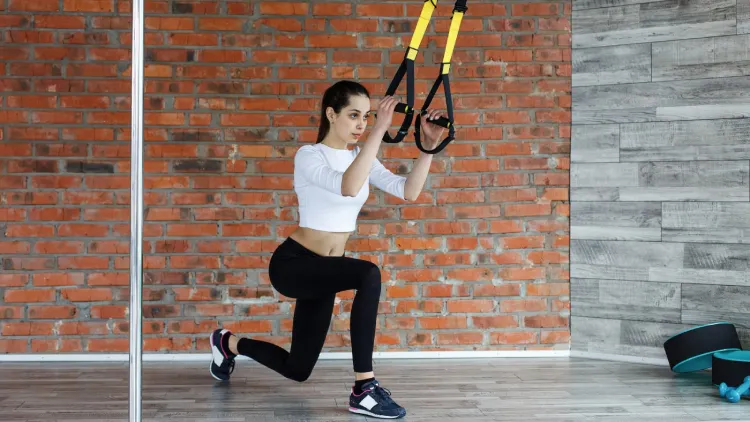
Common Mistakes to Avoid
- Only Arms- You should not only be pulling with your arms, but rather using your inner rotation.
- Too Much Weight – Heavy loads tend to destabilise form and risk injury.
- Not Controlling the Return – When you allow the cable to spring back, you relieve tension and also may strain your joints.
- Poor Posture- Rounding back or flexing forward decreases capability and safety.
Variations of Cable Woodchoppers
- Low-to-High- This develops rotational strength.
- Kneeling – creates isolation of core muscles.
- Single-Arm- Tests grip strength and stability.
- Resistance Band Woodchoppers – A Good substitute when no cable machine is found.
- Cable Rotations- A variation that emphasises a side-to-side rotation rather than diagonals.
Effectiveness of Cable Workouts
Exercises that involve the use of cables, such as woodchoppers, are very effective since the tension is maintained throughout the exercise compared to free weights, where tension usually decreases at some point. Cables are capable of providing smoother motion paths, as well as safer rotational training, than dumbbells do. They could be utilised in hypertrophy, endurance, strength, and fat-burning exercises.
You can also build muscle using cables, provided you overload them progressively, as is the case with free weights. Cable training is also used in conjunction with dumbbell or barbell training by many lifters to get the best results.
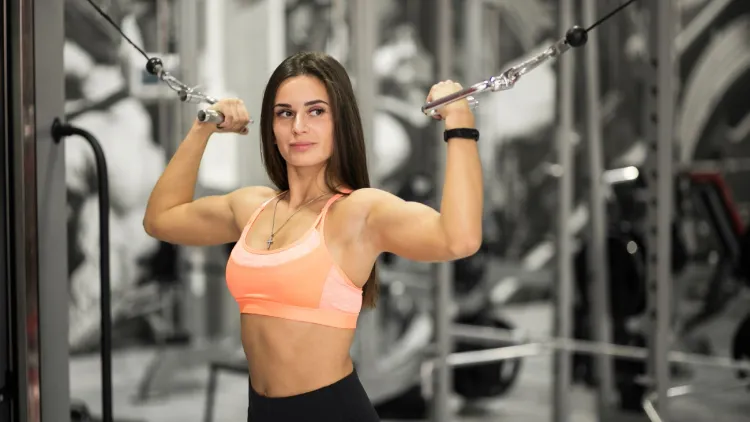
Related Core & Mobility Exercises
- V-Ups – This is a bodyweight exercise that works the lower and upper ab muscles at the same time.
- Hollow Body Hold – Achieves core stability and is sometimes referred to as planks (both are effective, but hollow holds address deeper core muscles).
- Good Morning Exercise is a hip-hinge that strengthens the hamstrings and the lower back.
- Bird Dog Exercise- This exercise is used to enhance stability and posture by training the core and spine simultaneously.
- Superman Hold- Develops the lower back and glutes by holding a long prone position.
- World’s greatest stretch- A sequence of stretches that mix lunges, twists and stretches to enhance flexibility and athletic performance.
These are complementary to cable woodchoppers to add variety to a core and mobility program.
How Many Reps Should You Do?
- In case of general fitness: 2-3 sets with 12-15 reps per side.
- To build hypertrophy and strength: 3-4 sets of 8-12 reps on each side using increased resistance.
It is important to remember that twisting movements generate strength and stability, but fat burning around the belly is most effective with caloric deficit, regular training and nutrition. Twisting will not burn belly fat, but it will tighten the muscles under it.
Are Cable Woodchoppers Safe?
Yes, most people can safely perform them when they are done in the right form. You need to start with lightweight and add resistance. To prevent muscular imbalances, always make sure that the exercises are done on both sides. When you have any back problems, you should consult a trainer or physical therapist before including them.
Final Thoughts
Cable wood choppers are among the most effective functional core exercises that you may incorporate in your workout program. They exercise the abs, the obliques, the shoulders, the hips, and the back, which allows building a strong and defined midsection. They also enhance rotational power, spinal health, posture, and athletic performance in addition to aesthetics.
Cable woodchoppers can be a staple of an effective, well-balanced fitness program when they are combined with other basic exercises such as planks, V-ups, and hollow holds. They are convenient, healthy, and universal among amateur and professional athletes and, as such, should be a staple of every person who wants to work on their core and improve training to a new level.
Frequently Asked Questions
1. Do cable wood choppers make good abs?
Yes, cable woodchoppers are great at tightening and firming the abs, particularly the obliques. Although they will not directly melt belly fat, when used in conjunction with proper diet and general fat-loss training, they tighten and tone the core muscles.
2. Do you do cable woodchoppers on either side?
Absolutely. In order to prevent muscle imbalances, cable woodchoppers must always be performed on both sides. Both sides should be trained so that the core strength, the stability, and the symmetry are balanced.
3. Are cable woodchoppers able to build muscle?
Yes, cable woodchoppers will be able to lead to hypertrophy (muscle growth) when done with the correct resistance and progressive overload. The tension created by the cables is also good at keeping the core and upper body strong and well-defined.
4. Would cable wood choppers be superior to dumbbell twists?
Cable woodchoppers usually offer greater degrees of control and tension during the movement than dumbbell twists. This renders them more amenable to rotational training and more effective in the development of strength and stability.
